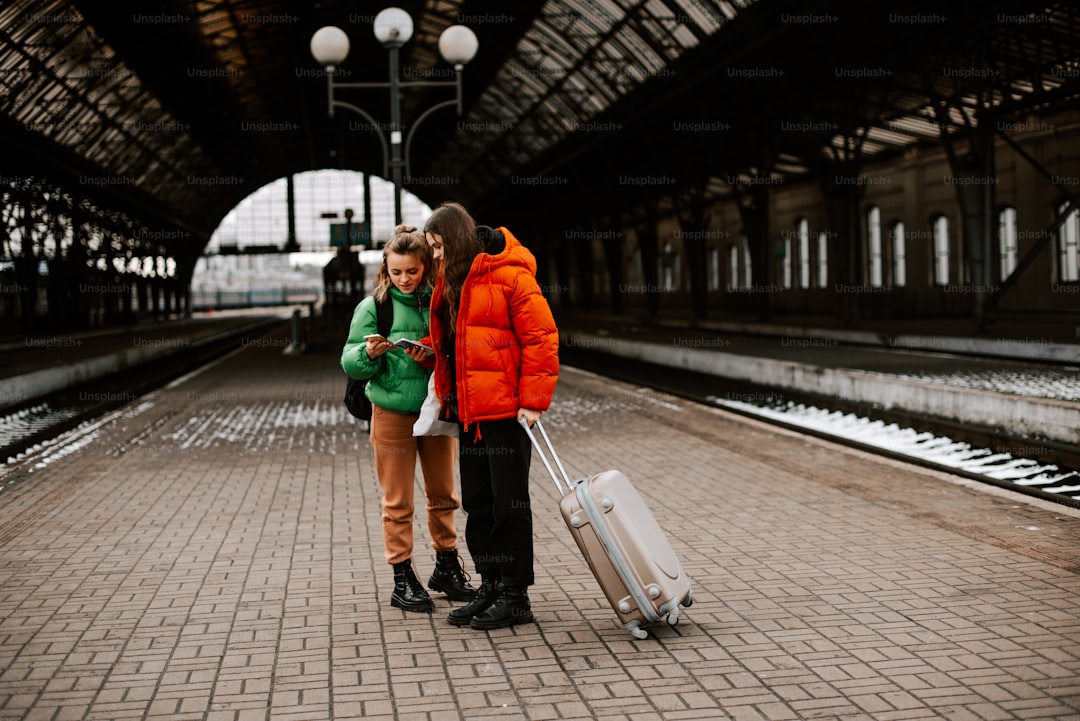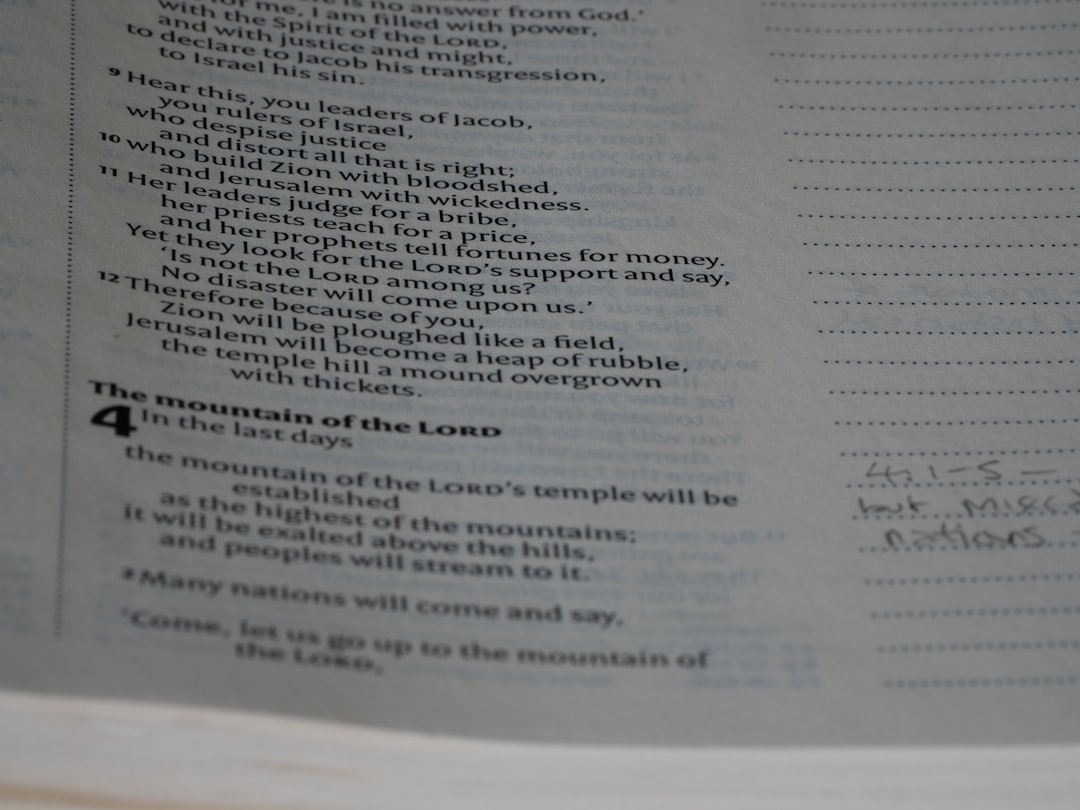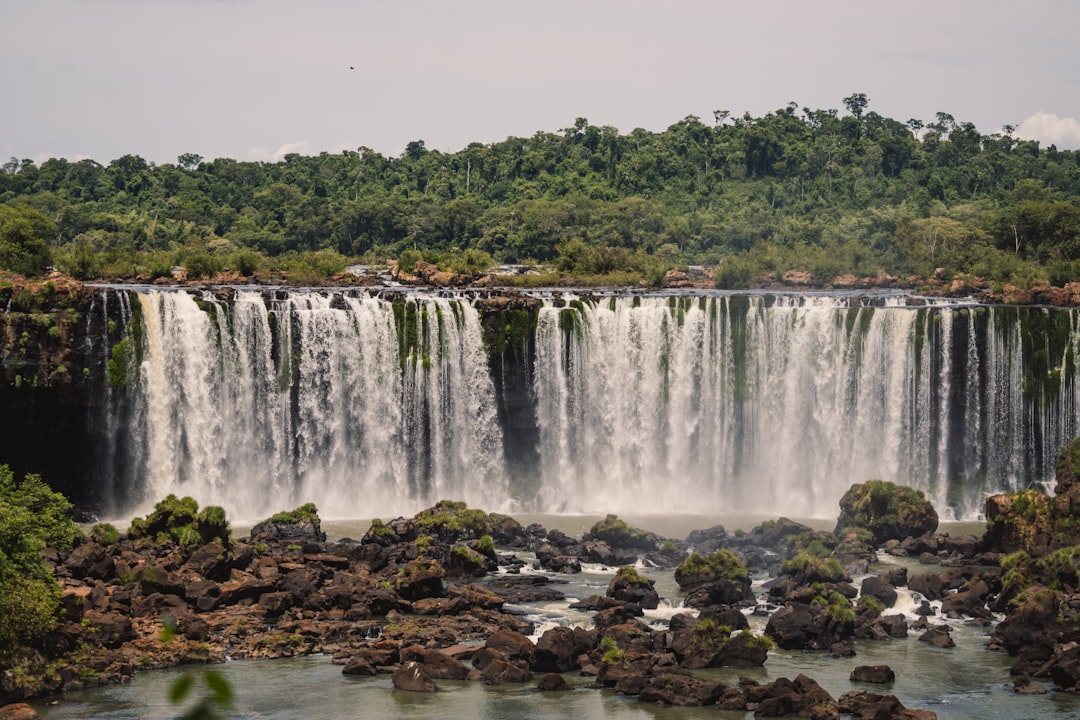Must‑Read Books for the Modern Wanderer and Creative Nomad

Introduction
For anyone who feels the pull of distant horizons, the hum of a laptop on a café table, or the urge to sketch a sunrise from a mountaintop, books are more than a pastime. They are portable mentors, silent companions that can be carried in a backpack, a Kindle, or even a mental library of passages recalled on a night train. The modern wanderer and creative nomad thrive on ideas that stretch beyond borders, on stories that validate the restless spirit, and on practical wisdom that turns dreaming into doing.
In this guide we explore the essential reads that inform, inspire, and equip the itinerant mind. Each selection has been chosen for its relevance to a life lived in motion—whether you are planning a cross‑continent trek, building a location‑independent business, or seeking artistic fuel for the next piece of work. The books are grouped by the role they play in a nomadic journey, from shaping mindset to mastering logistics, from sparking creativity to deepening philosophical insight.
Foundations of the Nomadic Mindset
Vagabonding – Rolf Potts
Potts captures the essence of long‑term, purposeful travel. The book is a manifesto that argues travel should be an intentional, self‑directed adventure rather than a series of tourist snapshots. Potts blends personal anecdotes with practical advice on budgeting, time management, and overcoming the fear of the unknown. For the modern wanderer, it offers a clear mental framework: travel as a form of self‑education and a catalyst for personal growth.
The Art of Stillness – Pico Iyer
Iyer’s meditation on the paradox of movement and stillness is a quiet counterpoint to the hustle of constant travel. He explores how moments of pause—whether in an airport lounge or a remote monastery—allow the nomad to process experiences and recharge creativity. The book is especially valuable for creative nomads who risk burnout by filling every gap with activity. Iyer’s prose encourages the practice of mindful observation, turning any location into a sanctuary for thought.
Into the Wild – Jon Krakauer
Krakowski’s investigative narrative of Christopher McCandless’s journey into the Alaskan wilderness serves as both inspiration and caution. The story delves deep into the motivations behind abandoning conventional life, the allure of total immersion in nature, and the limits of self‑reliance. For wanderers, it is a reminder to balance romantic ideals with realistic preparation, and to honor the responsibility we hold toward ourselves and the environments we enter.
The Four‑Hour Workweek – Timothy Ferriss
Ferriss presents a blueprint for escaping the 9‑to‑5 grind and creating a lifestyle that can be pursued from anywhere. The book introduces concepts such as “mini‑retirements,” automation, and the art of selective outsourcing. While some tactics feel dated, the core principle—designing work around life rather than the reverse—remains a cornerstone for digital nomads seeking financial freedom and geographic flexibility.
The Wander Society – Keri Smith
Smith invites readers to join an imagined secret club that encourages playful exploration and curiosity. The book is filled with prompts, doodles, and challenges that turn everyday surroundings into a field of discovery. It is an excellent tool for creative nomads who want to cultivate a habit of looking for wonder in the mundane, and for anyone who needs a gentle nudge to step outside comfort zones.
Practical Guides for Travel Logistics
How to Travel the World on $50 a Day – Matt Kepnes
Kepnes, known as “Nomadic Matt,” distills his years of budget travel experience into a concise handbook. He covers everything from cheap accommodation strategies and low‑cost transportation hacks to finding free Wi‑Fi and negotiating local rates. The book is a practical reference for those who want to stretch every dollar while maintaining a comfortable level of safety and comfort.
The Rough Guide to First‑Time Solo Travel – Lonely Planet
Lonely Planet’s seasoned editors compile a thorough guide for solo adventurers embarking on their first independent trip. The sections cover safety, cultural etiquette, packing essentials, and how to navigate language barriers. What sets this guide apart is its focus on psychological preparation—building confidence, handling loneliness, and turning solo moments into opportunities for deep connection with places and people.
Remote: Office Not Required – Jason Fried & David Heinemeier Hansson
Written by the founders of Basecamp, this book tackles the practicalities of remote work—from setting up a portable office to establishing boundaries with clients and collaborators. The authors share case studies of teams that have thrived without a central office, offering insights into communication tools, time‑zone management, and creating a sustainable work‑life rhythm on the road.
The Digital Nomad Handbook – Lonely Planet
A newer addition to the Lonely Planet catalog, this handbook addresses the specific needs of location‑independent professionals. Topics include visa options for digital nomads, co‑working space etiquette, health insurance across borders, and tax considerations for freelancers. The book also includes a curated list of nomad‑friendly cities, each evaluated for internet reliability, cost of living, and community vibe.
The Power of Habit – Charles Duhigg
Although not a travel guide in the traditional sense, Duhigg’s exploration of habit formation provides a framework for building routines while on the move. The ability to establish consistent sleep, exercise, and work habits in ever‑changing environments is a vital skill for nomads. The book offers actionable steps for identifying cues, designing routines, and reinforcing positive behaviors regardless of geography.
Creative Inspiration for the Wandering Soul
Steal Like an Artist – Austin Kleon
Kleon’s manifesto for creative living is perfectly suited to the nomadic mindset, which thrives on remixing experiences from diverse cultures. The book’s bite‑size lessons, illustrated with hand‑drawn sketches, encourage artists to collect ideas, embrace influence, and produce original work through synthesis. Its portable format makes it ideal for reading on a train or during a beach sunrise.
The Creative Habit – Twyla Tharp
Renowned choreographer Tharp outlines a systematic approach to nurturing creativity, emphasizing daily practice, observation, and discipline. The techniques she shares—such as “spontaneous movement” and “pre‑performance rituals”—can be adapted to any artistic medium, whether writing, photography, or music. For nomads, the book serves as a reminder that creativity flourishes through consistent effort, even when the surroundings constantly shift.
On the Road – Jack Kerouac
Kerouac’s Beat Generation classic captures the raw energy of a cross‑country journey fueled by spontaneity, jazz, and existential searching. The novel’s stream‑of‑consciousness style mirrors the mental flow of a traveler moving from place to place, absorbing fragments of culture and language. Reading it while on a road trip deepens the sense of connection to the literary lineage of wanderers who turned the road into a canvas for self‑discovery.
The Photographer’s Eye – Michael Freeman
Freeman dissects the visual language of photography, explaining composition, color, and perspective in clear, actionable terms. The book includes exercises that encourage photographers to train their eyes to see beyond the obvious—an essential skill for nomads who constantly encounter new visual environments. The concepts translate easily to other visual arts, making it a versatile resource for any creator on the move.
Letters to a Young Poet – Rainer Maria Rilke
Rilke’s epistolary counsel to an aspiring poet delves into the inner life of the creative process, emphasizing solitude, patience, and the importance of listening. The timeless wisdom resonates deeply with those who find inspiration in the quiet moments between destinations. The letters can be reread as a meditation, offering guidance on nurturing a voice that remains authentic across borders.
Stories of Nomadic Lives
Wild – Cheryl Strayed
Strayed’s memoir recounts her solo hike along the Pacific Crest Trail, a journey of physical endurance and emotional healing after personal loss. The narrative balances raw vulnerability with vivid descriptions of wilderness, offering insight into the transformative power of long‑distance trekking. For anyone contemplating a solo adventure as a form of catharsis, the book provides both inspiration and a realistic view of the challenges involved.
Eat, Pray, Love – Elizabeth Gilbert
Gilbert’s bestseller chronicles a year of self‑exploration across Italy, India, and Indonesia. While some critique the memoir for its privileged perspective, its honest portrayal of seeking balance—through food, spirituality, and love—has resonated with countless readers. The book highlights the importance of allowing oneself to be vulnerable, to lean into unfamiliar cultures, and to find joy in everyday rituals while traveling.
A Year in Provence – Peter Mayle
Mayle’s light‑hearted account of his first year living in the French countryside paints a vivid picture of local customs, culinary delights, and the rhythm of village life. The memoir is a celebration of immersion, showing how deep engagement with a place can transform a temporary stay into a profound cultural experience. It serves as a gentle reminder that even short‑term relocations can leave lasting impressions.
The Alchemist – Paulo Coelho
Although fictional, Coelho’s allegorical tale of a shepherd’s quest for treasure embodies the universal longing for purpose that drives many wanderers. The story’s emphasis on listening to one’s heart, reading omens, and embracing the journey itself aligns with the ethos of creative nomads who view life as a series of meaningful quests.
Travels with Charley – John Steinbeck
Steinbeck’s road trip across the United States with his poodle, Charley, offers a blend of social commentary, personal reflection, and vivid landscape description. The narrative captures the American spirit of the mid‑20th century, yet its themes of curiosity, open‑mindedness, and the search for connection remain timeless. The book underscores the value of traveling with a companion—human or animal—to deepen observation and conversation.
Philosophy and Deeper Thinking
Siddhartha – Hermann Hesse
Hesse’s novel follows a young man’s spiritual journey along the banks of the Ganges, exploring themes of self‑knowledge, the cyclical nature of life, and the pursuit of inner peace. The story resonates with nomads who often grapple with questions of identity beyond geographic labels. Its lyrical prose encourages readers to view each encounter as a step toward greater understanding.
The Art of Travel – Alain de Botton
De Botton blends philosophy, literature, and personal anecdotes to examine why we travel and what we seek from it. He discusses anticipation, the joy of discovery, and the melancholy that can accompany return. The book offers a reflective lens for nomads to interrogate their motivations, helping them travel with intention rather than mere escapism.
Zen and the Art of Motorcycle Maintenance – Robert M. Pirsig
A philosophical novel that weaves a cross‑country motorcycle trip with a deep dive into the nature of quality, rationality, and the human experience. The narrative illustrates how the act of traveling can become a vehicle for internal inquiry, making it an apt read for those who view the road as a laboratory for thought.
The Book of Joy – Dalai Lama & Desmond Tutu
Through dialogues between two spiritual leaders, the book explores the foundations of lasting happiness, compassion, and resilience. For nomads facing uncertainty, cultural dislocation, and the pressures of a mobile lifestyle, the insights offer tools for cultivating inner joy irrespective of external circumstances.
The Geography of Bliss – Eric Weiner
Weiner travels to various nations to investigate how happiness is defined and pursued around the world. The blend of travelogue and social science reveals cultural attitudes toward contentment, providing nomads with a nuanced perspective on how environment influences emotional well‑being.
Hybrid Guides for the Creative Entrepreneur
The $100 Startup – Chris Guillebeau
Guillebeau profiles dozens of entrepreneurs who launched profitable ventures with minimal capital. The book’s emphasis on turning passions into marketable products aligns perfectly with the digital nomad’s desire to fund a location‑independent lifestyle through skill‑based services or niche products.
Show Your Work! – Austin Kleon
A sequel to Steal Like an Artist, this guide focuses on the practical steps of sharing creative output, building an audience, and sustaining a career while on the move. Kleon’s ten‑step approach—ranging from “think process” to “share something small every day”—offers a roadmap for nomads who need to maintain visibility without a fixed office.
Rework – Jason Fried & David Heinemeier Hansson
Fried and Hansson challenge conventional business wisdom, advocating for simplicity, rapid iteration, and minimal bureaucracy. The book’s core principles—such as “make the rest of the world your customers” and “don’t be a hero”—are especially relevant for freelancers who must adapt quickly to changing market demands while traveling.
Deep Work – Cal Newport
Newport’s argument for cultivating focused, distraction‑free periods of productivity is essential for anyone trying to produce high‑quality work while surrounded by the stimuli of new locations. The book provides actionable strategies—time blocking, embracing boredom, and minimizing shallow work—that help nomads protect their creative bandwidth.
The Lonely Planet Travel Writing – Don George
A practical handbook that walks writers through the process of turning travel experiences into compelling stories for magazines, blogs, or books. The guide covers pitching, narrative structure, and ethical considerations, equipping nomadic writers with the tools to monetize their journeys through storytelling.
Curating Your Portable Library
A nomadic lifestyle demands careful consideration of what to carry, what to store digitally, and what to leave behind. Below are actionable tips for building a library that travels as lightly as you do.
-
Prioritize Versatility: Choose books that serve multiple purposes—mindset, skill development, and entertainment. A single title like The Power of Habit can improve personal productivity, enhance travel routines, and provide psychological insight.
-
Leverage E‑Readers: Devices such as the Kindle Paperwhite or Kobo Clara HD allow you to store hundreds of titles without adding weight. Most major travel and creative titles are available in e‑book format, often at lower prices.
-
Create a “Read‑Later” List: Use apps like Pocket, Instapaper, or Notion to bookmark articles, essays, and excerpts you encounter online. This keeps your digital footprint organized and ensures you can revisit valuable content when you have downtime.
-
Rotate Physical Books: When you settle in a location for a few weeks, exchange a few paper books with local travelers, hostels, or community libraries. This not only refreshes your reading material but also fosters connections with fellow wanderers.
-
Back Up Digitally: Store PDFs, EPUBs, and notes in cloud services such as Google Drive, Dropbox, or OneDrive. Ensure you have offline access for regions with limited internet connectivity.
-
Pair Reading with Exploration: Choose books that relate to your current destination—history, culture, or language guides. This synergy deepens your understanding and makes reading a part of the travel experience rather than a separate activity.
-
Set a Reading Goal: Whether it’s one chapter per flight or a set number of pages per day, having a modest target keeps you engaged with your library while preventing reading from feeling like another task on the agenda.
Conclusion
The modern wanderer and creative nomad lives at the intersection of curiosity, adaptability, and expression. The books highlighted here serve as compasses, tools, and companions, each contributing a piece to the larger puzzle of a fulfilling, location‑independent life. By immersing yourself in the wisdom of seasoned travelers, the strategies of remote entrepreneurs, and the reflections of philosophers and artists, you equip yourself to navigate both external landscapes and internal terrains.
Carry these titles—physically or digitally—alongside your passport and laptop. Let them spark ideas during long bus rides, provide reassurance when uncertainty looms, and inspire you to create works that echo the diverse places you call home, even if only for a season. The journey is continuous; the reading is perpetual. Keep turning pages, keep moving forward, and let every story you encounter become a stepping stone on the path of endless discovery.
Random Posts

Minimalist Nomad Living Sustainable Travel with Light Packing
Travel light, think small: Minimalist nomad living frees mind, cuts waste and costs, and turns every journey into a sustainable adventure.
3 weeks ago

How Much Does Bali Really Cost for Remote Workers
Discover the real monthly cost of living in Bali as a remote worker, from affordable housing and coworking fees to hidden expenses, so you can budget confidently and choose the right spot for work and life
2 months ago

Simplified Guide to International Tax Obligations
Learn how to navigate tax residency rules, avoid double taxation, and stay compliant while you travel the world. This quick guide turns complex international tax duties into clear, actionable steps.
2 months ago

Sustainable Eating on the Go Guide for Nomad Lifestyle
Discover how nomads can eat healthy, low-impact meals on the move, balancing nutrition, eco-friendly choices and local culture with simple tools, tips and a sustainable mindset
2 months ago

Mastering the Nomad Lifestyle Essential Packing Guides and Resources
Adopt a minimalist mindset: pack only items that boost work, health, safety or true joy. Treat weight as currency, choose versatile, durable gear, and travel lighter, cheaper, and freer
2 months ago
Latest Posts

Essential Software Every Remote Professional Should Use
Master remote work with essential tools: instant messaging like Slack, high definition video calls such as Zoom, and asynchronous voice apps. Streamline communication, stay connected and boost productivity.
1 day ago

Mastering Remote Work Productivity for Digital Nomads and Freelancers
Learn proven habits, tools, and tactics that help digital nomads and freelancers stay focused, deliver quality work, and maintain a sustainable lifestyle while traveling the world.
1 day ago

Tech‑Friendly European Towns Perfect for Remote Living
Discover Europe’s best small towns where fast internet, affordable living and vibrant tech communities let you work remotely while soaking up historic charm, lakeside views or mountain air.
1 day ago